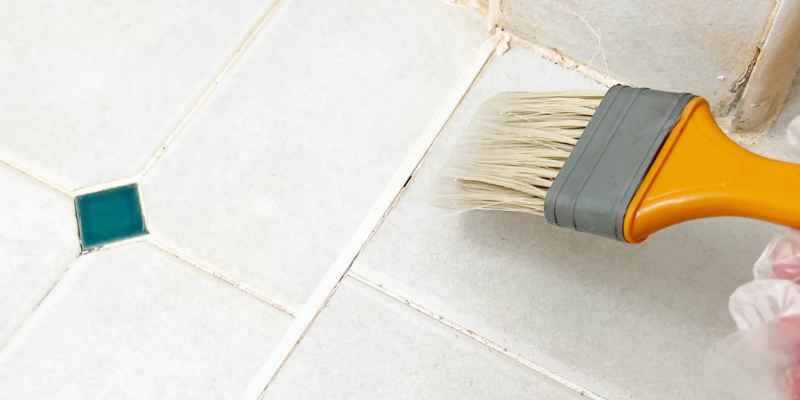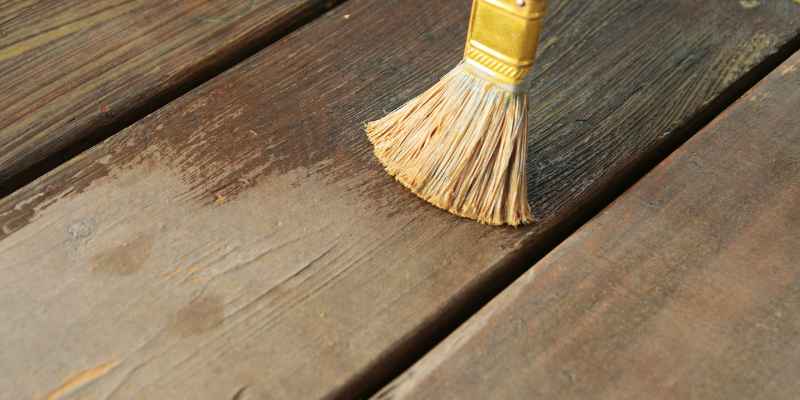Wood filler is not inherently waterproof, but there are water-resistant options available for both interior and exterior use. These fillers may include special hardeners to prevent shrinking and cracking, making them suitable for various applications.
Wood filler serves as a versatile solution for repairing damaged wood surfaces, such as filling cracks, gouges, or holes in furniture or trim pieces. While traditional wood fillers may not be completely waterproof, certain formulations with added protective features can withstand exposure to moisture and outdoor conditions.
Understanding the differences between standard wood fillers and those designed for enhanced durability can help you select the right product for your specific project needs. By choosing a water-resistant wood filler, you can ensure long-lasting repair and restoration of wooden structures, both indoors and outdoors.
The Truth About Wood Filler
Wood filler is a versatile product used for repairing and restoring wood surfaces. It is commonly used to fill gaps, cracks, holes, and other imperfections in wood, providing a smooth and seamless finish. Wood filler comes in various formulations, including water-based and solvent-based options. It is a staple in woodworking and carpentry, offering a quick and efficient solution for cosmetic and structural wood repairs.
Understanding Waterproof Vs. Water-resistant
To address the question, “Is wood filler waterproof?” it is essential to differentiate between waterproof and water-resistant properties. Waterproof means impervious to water, while water-resistant implies the ability to resist the penetration of water to some degree but not entirely.
When it comes to wood filler, waterproof options provide complete protection against water, making them suitable for outdoor applications and areas prone to moisture. On the other hand, water-resistant wood fillers offer some level of water protection but may not withstand prolonged exposure to water or high-humidity environments.
Is Wood Filler Waterproof?
Exploring Water Resistance
Wood filler serves as a handy solution for fixing imperfections in wood surfaces, but is it waterproof? In general, most wood fillers are not inherently waterproof. They may absorb moisture over time, leading to swelling or degradation.
Limitations For Outdoor Use
Wood fillers are typically not recommended for outdoor use due to their susceptibility to moisture. Outdoor conditions can cause wood fillers to shrink, crack, or deteriorate, compromising the repair.
Differences Between Wood Filler And Wood Putty
When it comes to repairing wooden objects, two commonly used products are wood filler and wood putty. While they may seem similar, there are some key differences between the two that make each suitable for different purposes and applications.
Purpose And Applications
Wood filler is a versatile product specifically designed to fill larger gaps, cracks, and voids in wood. It is commonly used for repairing damaged or rotted wood, filling knot holes, and smoothing out uneven surfaces. Wood fillers are typically made of a mixture of wood fibers and a binder, such as epoxy or vinyl.
On the other hand, wood putty is a thinner and more pliable compound that is primarily used for smaller repairs. It is ideal for filling nail holes, scratches, dings, and small gouges in wood surfaces. Wood putty is usually made from a combination of wood dust or fibers, along with a binder like linseed oil or lacquer.
Stainability And Durability
One of the key differences between wood filler and wood putty is their stainability and durability. Wood filler is designed to be stainable, meaning it can be colored to match the surrounding wood surface. This makes it the ideal choice for repairs that will be exposed and require a cohesive appearance. Wood filler can also be sanded and painted over, providing a seamless finish.
On the other hand, wood putty is typically not stainable or paintable. It is intended to be used for repairs that will not be visible, as it does not blend well with the surrounding wood surface. However, wood putty is generally more durable and weather-resistant than wood filler. It can withstand temperature fluctuations and is suitable for outdoor use.
| Wood Filler | Wood Putty |
|---|---|
| Designed for filling larger gaps, cracks, and voids | Used for smaller repairs, such as nail holes and scratches |
| Stainable and paintable | Not stainable or paintable |
| Can be sanded and painted over for a seamless finish | Does not blend well with the surrounding wood surface |
| Not as weather-resistant, better suited for interior use | More durable and weather-resistant, suitable for outdoor use |
In conclusion, while wood filler and wood putty are both used for wood repairs, they have different purposes and applications. Wood filler is best for larger gaps and can be stained and painted for a seamless finish. Wood putty, on the other hand, is ideal for smaller repairs and is more durable for outdoor use. Consider the specific requirements of your project to choose the right product for the job.
When To Use Wood Filler Or Wood Putty
Wood fillers and wood putties are essential materials for repairing and restoring wooden objects. They can both be used to fill in gaps, cracks, and imperfections in wood, but there are some key differences between the two. Understanding when to use wood filler or wood putty can help you achieve the best results for your project. Let’s take a closer look at the factors to consider when deciding which one to use.
Indoor Vs. Outdoor Projects
One important consideration when choosing between wood filler and wood putty is the nature of your project. Wood filler, also known as wood dough, is typically recommended for indoor projects. It is a water-based product that is easy to use and clean up. However, it may not hold up well to moisture exposure, making it unsuitable for outdoor use.
On the other hand, wood putty is a solvent-based product that is more durable and resistant to moisture. It is commonly used for outdoor projects where the wood will be exposed to the elements. Wood putty hardens and is less likely to shrink or crack, making it a better choice for repairing outdoor furniture, decks, or fences.
Moisture Exposure Considerations
Moisture exposure is a crucial factor to consider when deciding between wood filler and wood putty. If your project will be subjected to high levels of moisture or frequent temperature fluctuations, it is essential to choose a product that can withstand these conditions.
Wood filler, being a water-based product, is susceptible to shrinking and cracking when exposed to moisture. It is not recommended for projects that will be in direct contact with water or extreme humidity. However, there are specialized two-part wood fillers available that include hardeners to prevent shrinking and cracking, making them suitable for both indoor and outdoor use.
Wood putty, on the other hand, is more resistant to moisture and is designed for use in outdoor environments. It can withstand exposure to rain, humidity, and temperature changes without compromising its integrity. If your project will be exposed to water or outdoor conditions, using wood putty is a wise choice to ensure a long-lasting and durable repair.
In conclusion, the choice between wood filler and wood putty depends on the specific requirements of your project. Wood filler is recommended for indoor use and should not be exposed to moisture, while wood putty is better suited for outdoor projects or areas prone to moisture exposure. Consider the nature of your project and the level of moisture it will encounter to make the right choice between these two versatile wood repair materials.
Choosing The Right Wood Filler

Water-Based Fillers: Easy to use and clean up, best for indoor projects.
Solvent-Based Fillers: Ideal for outdoor projects, more durable but require proper ventilation.
Indoor Use: Water-based fillers are recommended for interiors as they are easy to work with and clean up.
Outdoor Use: Solvent-based fillers are more suitable for outdoor applications due to their durability.
How To Ensure Water Resistance
Wood filler is not inherently waterproof, but there are certain types of wood fillers that are designed to be water-resistant. When choosing a wood filler, look for one that specifically mentions water resistance or outdoor use. Additionally, applying a waterproof sealant or finish over the filled area can help ensure water resistance.
Sealing And Coating Techniques
In order to ensure water resistance when using wood filler, it is important to apply suitable sealing and coating techniques. These techniques can help to protect the wood filler from water damage and extend its lifespan.
- Apply a waterproof sealant: Before using wood filler, it is recommended to apply a waterproof sealant on the surface of the wood. This sealant will create a barrier that prevents water from seeping into the wood and causing damage. There are various types of waterproof sealants available in the market, such as polyurethane or epoxy sealants. Make sure to choose a sealant that is compatible with wood filler.
- Coat the wood filler: After filling the wood with wood filler, it is advisable to coat the filled area with a waterproof coating. This additional layer of protection will further enhance the water resistance of the wood filler. You can use a waterproof paint or varnish to coat the filled area. Apply multiple coats if necessary, to ensure complete coverage and durability.
Appropriate Applications
While wood filler can provide water resistance, it is important to understand its appropriate applications. Not all wood filler products are suitable for use in all situations, especially those exposed to excessive moisture or outdoor conditions.
- Interior use: Wood filler is typically designed for use in indoor applications where it will not be directly exposed to water or high levels of moisture. It is commonly used for repairing small cracks, nail holes, or other imperfections on interior wooden surfaces like furniture, cabinets, or flooring.
- Exterior use: If you require water-resistant wood filler for outdoor or high-moisture applications, it is essential to choose a product that is specifically designed for exterior use. These types of wood fillers are formulated to withstand exposure to the elements and prevent damage caused by moisture, temperature changes, and UV radiation.
Always read the manufacturer’s instructions and product labels to ensure you are using the wood filler in the appropriate applications.
Specialized Waterproof Wood Fillers
When it comes to wood projects that may be exposed to moisture, using a waterproof wood filler is essential to ensure durability and longevity. These specialized wood fillers are designed to resist water penetration, preventing rot, mold, and deterioration of the wood.
Gorilla Ultimate Waterproof Wood Glue
Gorilla Ultimate Waterproof Wood Glue is a top choice for projects that require a strong, waterproof bond. This adhesive is not only water-resistant but also bonds strongly to wood, making it ideal for outdoor applications.
Bondo Wood Filler And Red Cream Hardener
Bondo Wood Filler, when mixed with Red Cream Hardener, becomes a powerful waterproof solution for filling and repairing wood. It dries quickly and can be sanded, shaped, and painted to blend seamlessly with the wood surface.

Frequently Asked Questions On Is Wood Filler Waterproof
Is There A Waterproof Wood Putty?
There are waterproof wood putties available like SEISSO Wood Putty for outdoor use in areas exposed to moisture.
When Should You Not Use Wood Filler?
Wood filler should not be used outdoors as it can shrink and crack, especially in temperature changes. However, some two-part wood fillers with special hardeners prevent this. They are suitable for both interiors and exteriors.
Is Wood Filler Permanent?
Yes, wood filler is permanent and can permanently repair damaged or rotted wood, both indoors and outdoors.
What’s The Difference Between Wood Filler And Wood Putty?
Wood filler is stainable and sandable, while wood putty is not. Wood putty is ideal for small repairs like nail holes, scratches, and dings. Wood filler is more durable and suitable for indoor and outdoor projects.
Conclusion
If you’re wondering about wood filler and water resistance, remember some products are waterproof. Choose wisely based on your project needs for long-lasting results. Ensure to follow the product’s instructions for best outcomes in your woodworking endeavors.


